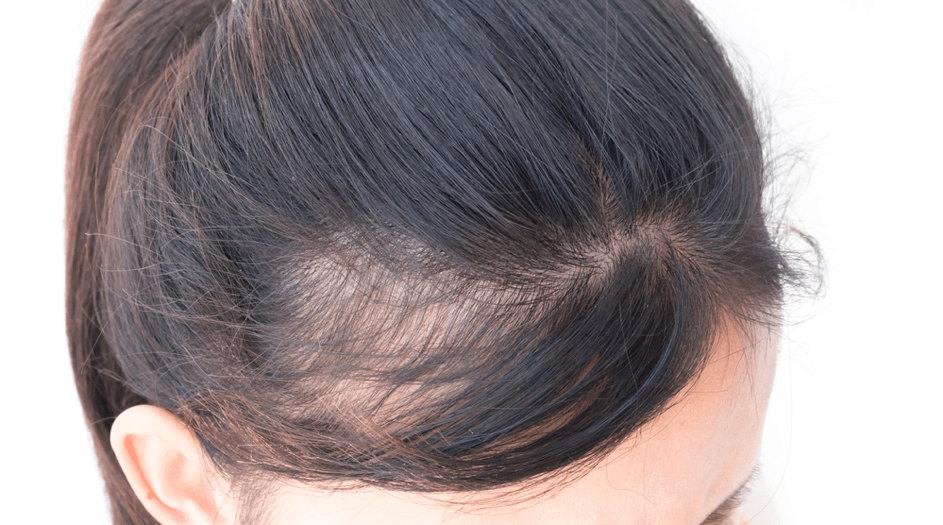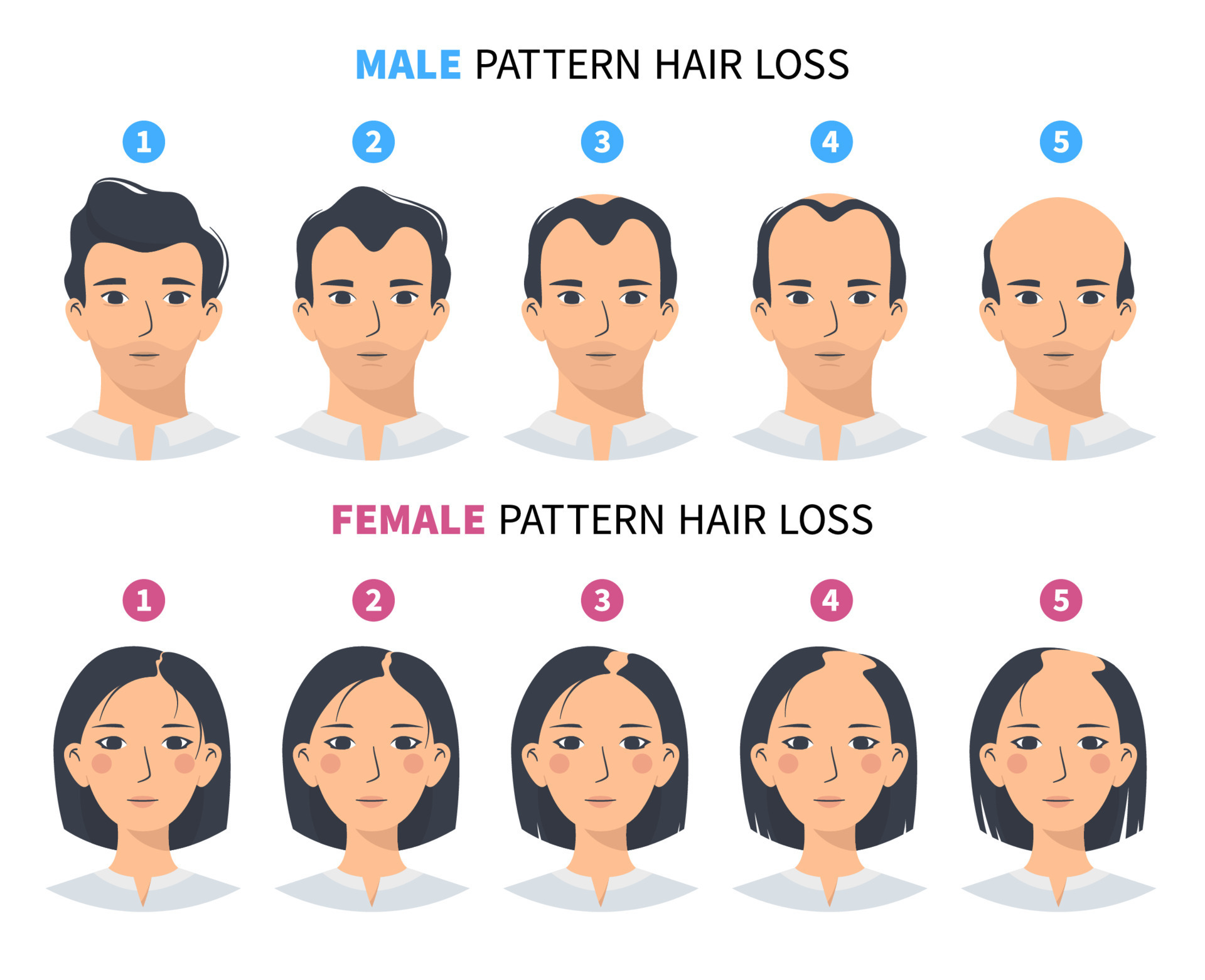Table Of Content

They often notice clumps of hair coming out in the shower or in their hairbrush. They should be asked to recall any potential trigger two to five months before the onset of the condition. Tinea capitis is a dermatophyte infection of the hair shaft and follicles that primarily affects children (Figure 5). Risk factors include household exposure and exposure to contaminated hats, brushes, and barber instruments. Trichophyton tonsurans is the most common etiology in North America.14 Transmission occurs person-to-person or from asymptomatic carriers.

Everything You Need to Know About Hair Loss
As part of your hair’s growth cycle, new strands grow and take the place of the ones you shed. Hair is made of a protein called keratin that is produced in hair follicles in the outer layer of skin. As follicles produce new hair cells, old cells are being pushed out through the surface of the skin at the rate of about 6 inches a year.
News Related to This Health Topic
DermNet does not provide an online consultation service.If you have any concerns with your skin or its treatment, see a dermatologist for advice. A hair shaft grows within a follicle at a rate of about 1 cm per month. It is due to cell division within the hair bulb at the base of the follicle. The cells produce the three layers of the hair shaft (medulla, cortex, cuticle), which are mainly made of the protein keratin (which is also the main structure of skin and nails).
Get the UCLA Health App
If your hair loss is caused by an underlying disease, treatment for that disease will be necessary. If a certain medication is causing the hair loss, your doctor may advise you to stop using it for a few months. This works well for people with inherited baldness since they typically lose hair on the top of the head. Because some hair loss can be progressive, you may need multiple procedures over time. Typically, the most common types of hair loss are treated with topical or oral medications, which will likely be the first course of treatment.

For example, a woman may have had a baby a few months ago, and this may be causing obvious hair shedding. She may also have early hereditary loss, which isn’t so obvious. Alopecia areata mostly affects hair, but in sometimes it can cause changes to the nails. People with the disease are usually healthy and have no other symptoms. In addition to a medical history and physical exam, a punch biopsy of the skin may help to identify the type of baldness and/or its cause. Hair loss can sometimes be a sign of an underlying disease.
Hair thinning treatments and home remedies
If you don’t normally consume such foods, talk with your doctor about taking a supplement. However, you should avoid taking any extra vitamins if you’re already getting the nutrients you need. There isn’t any evidence that doing so will reverse thinning hair, and getting too much of certain nutrients may actually do more harm than good.
The presence of erythema, scaling, or inflammation; altered or uneven hair distribution; or changes in shaft caliber, length, shape, or fragility may suggest other diagnoses. According to the American Academy of Dermatology, it’s completely normal to shed anywhere between 50 to 100 strands of hair per day. However, if you’ve noticed more strands falling out of your head than normal, you may be experiencing alopecia, the medical term for hair loss.
What's New in Hair Loss Therapies and Exosomes? - Dermatology Times
What's New in Hair Loss Therapies and Exosomes?.
Posted: Tue, 12 Mar 2024 07:00:00 GMT [source]
Any more than this could mean you’re shedding more than you should, which could contribute to overall thinning hair. Medications and other treatments help manage your hair loss, but they won’t cure the disease. Alopecia areata totalis and alopecia areata universalis are more severe and less likely to respond to treatment. Some small, limited studies have found that certain supplements and shampoos could be helpful, dermatologists say. However, your best bet if you’re suffering from hair loss is to see a board-certified dermatologist who can determine what’s causing your alopecia and then recommend a treatment plan.
Prescription medication that can regrow hair
You can also place less stress on your hair by limiting the use of heated styling tools as well as tight hairstyles. Laser therapy is typically used by dermatologists and other skin specialists. The FDA has cleared the way for some products to be used at home. When you wash your hair, gently apply pressure with your fingertips around your scalp to encourage blood flow.
Female-pattern baldness typically starts with scalp hairs becoming progressively less dense. Many women first experience hair thinning and hair loss where they part their hair and on the top-central portion of the head. Begin by determining if hair loss is focal or diffuse; if focal, look for scarring.
There are numerous diseases that can affect the hair and scalp. Diseases such as alopecia areata, anemia, male/female pattern baldness, and infections of the scalp can all cause significant difficulty and loss of daily well-being. Stanford Dermatology has established a special clinic focusing on the diagnosis and treatment of these disorders of the hair. Male pattern baldness is a very common type of hair loss that affects people assigned male at birth. The early stages usually start in your 30s, but some people have signs as early as their late teens.
If your dermatologist suspects that the cause of your hair loss could be a disease, vitamin deficiency, hormone imbalance, or infection, you may need a blood test or scalp biopsy. People with certain diseases, such as psoriasis, and those with allergic conditions such as hay fever are more likely to get alopecia areata. If you have a close family member with the disease, you may have a higher risk of getting it, but for many people, there is no family history. If your hair is thinning due to other reasons, you may be able to try topical products, such as shampoos and even prescription medications.

No comments:
Post a Comment